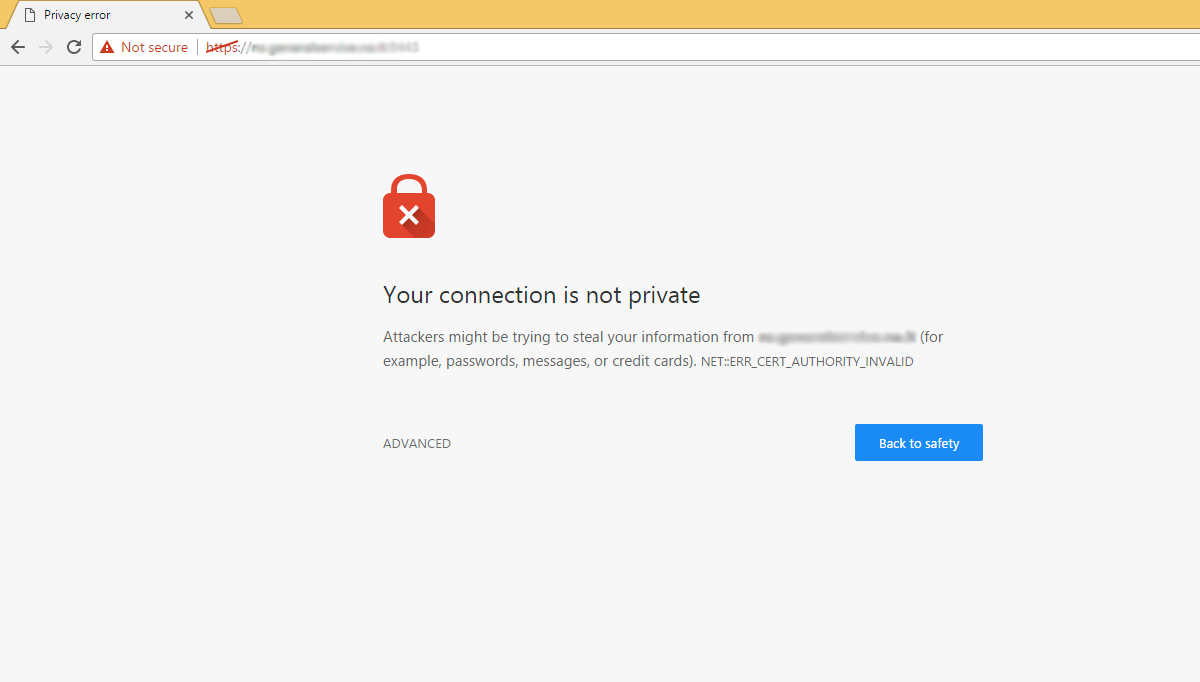Enable Key Generation In Chrome 2017
Set the key to Secure Shell. Be careful as this is different from TeraTerm etc. Click Import to select the key set. Select one and press Shift + arrow to select the public key and secret key. (Sorry in JP’s figure) The key is now imported. If only the secret key is selected, the selected key is not displayed (imported) in the pull down list. This is a problem for all chromium based browsers, but the above steps won't work in other derivatives like Vivaldi nor on Linux machines. For other chromium browsers users should use Firefox to go through the keygen process. The private key for a Comodo Code signing certificate is generated by the browser during certificate enrollment. When the submit button is pressed, a key pair of the selected size is generated. The private key is encrypted and stored in the local key database. Key Generation was a part of the implementation of the keygen HTML element. This has been removed from the W3C spec and it was accordingly removed from Chrome/Chromium browsers. Mar 08, 2017 First, you’ll need to establish a connection to the SSH server and open a tunnel. To do this, open the crosh shell by pressing Ctrl+Alt+T anywhere in Chrome OS. The shell will open in a browser tab. Next, use the appropriate ssh command to connect to an SSH server and establish a tunnel. Mozilla Firefox: This browser supports key generation and certificate installation by default through the keygen function and special certificate file type handling. Note: While Firefox supports in-browser certificate installation, it uses its own keystore to store the certificate and is not shared with other applications. Installing through Internet Explorer will install the certificate to the Windows Certificate Store which is used by other applications such as Microsoft Office, Outlook. The official Chrome docs say. Key generation: Some websites use keys when you fill out forms, including online purchases, for increased security and authentication. So it probably does refer to keygen.
With Secure Shell provided with Chromebook (Google Chrome), you can run Linux (CentOS) server without TeraTerm on Chromebook. In this procedure, switching to developer mode is unnecessary.
Generate public key
When generating a public key on a Chromebook, it is necessary to switch to the developer mode. However, since the key is generated on the Linux server side this time, switching to the developer mode is not necessary.
Generate the SSH public key / secret key on the Linux server as follows. The key generation is easy to carry out with logged in password authentication to already created operational users.
id_rsa, id_rsa.pub is generated under ~/.ssh/. Register the public key in the authentication key list.
If the setting of file name and access right is incorrect, it becomes SSH connection error (SSH Error Code 255, etc.), so review and fix it.
Copy the public key / private key to the Chromebook
Enable Key Generation In Chrome 2017 Version
Copy the public key and secret key to your hand with the SFTP tool etc.In the case of TeraTerm etc., it is sufficient to use only the secret key, but Secure Shell also requires a public key.
Create a folder such as ssh under the “Download” folder and copy the key from the server. Unfortunately .ssh etc .(period) Starting folder can not be created. *Be careful not to put it on Google Drive!! There is a risk of leakage of private key!! Mac monitor vector free download.
Set the key to Secure Shell
Be careful as this is different from TeraTerm etc. Click Import to select the key set.
Select one and press Shift + arrow to select the public key and secret key. (Sorry in JP’s figure)
The key is now imported.
If only the secret key is selected, the selected key is not displayed (imported) in the pull down list.
You can connect via SSH by connecting with this. Display is a pattern with pass phrase. Passphrase is requested instead of password. If a password is requested here, the SSH setting is incorrect.
How to delete a key set
When the key selection is wrong, it can be deleted as follows.
DEL key with state selected with Identity
On my ChromebookAcer C720 you can send DEL commands with Search + BackSpace.
Enable Key Generation In Chrome 2017 Free
Detailed manuals are listed here.
Conclusion - SSH to CentOS with Chromebook Secure Shell public key authentication
Enable Key Generation In Chrome 2017 Free

Battlefield 4 activation key generator. By generating keys on the Linux (CentOS) server side, public key authentication SSH connection with Secure Shell can be established without setting Chromebook to developer mode. Unlike TeraTerm etc., it is necessary to read the public key / secret key to the client with a set.
The following article refers to the process of generating client certificates at the SSOCircle Public IDP. In the PKI functionality of SSOCircle IDP we allow the automatic generation of keys and the enrollment of X.509 certificates. Client certificates are used for strong authentication. These certificates are not related to the certificates used with SAML single sign on.
As of Chrome 49 the keygen tag is deprecated and automatic generation of keys as used in the public IDP is turned off by by default. In order to use the automatic enrollment with Chrome enable it by executing the following steps:
- Open “Settings” from the beacon icon
- Click on Privacy: “Content Settings”
- At Key generation: Check the radio box “Allow all sites to use key generation in forms” or as a alternative: “Manage Exceptions” an enter idp.ssocircle.com as allowed hostname pattern